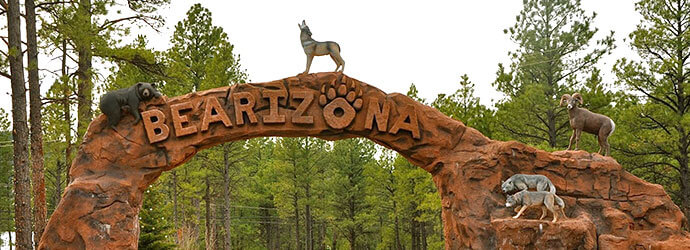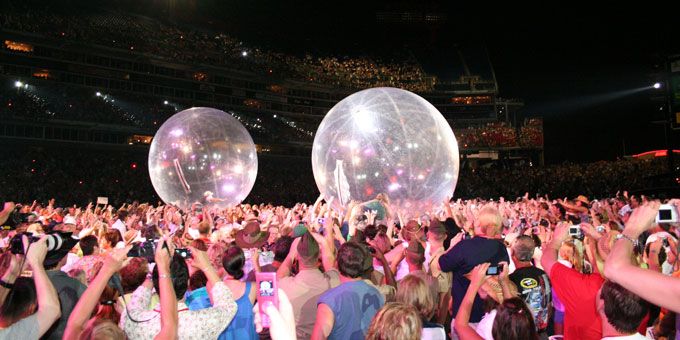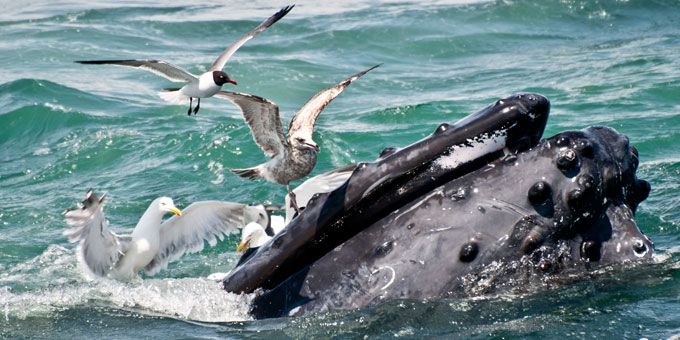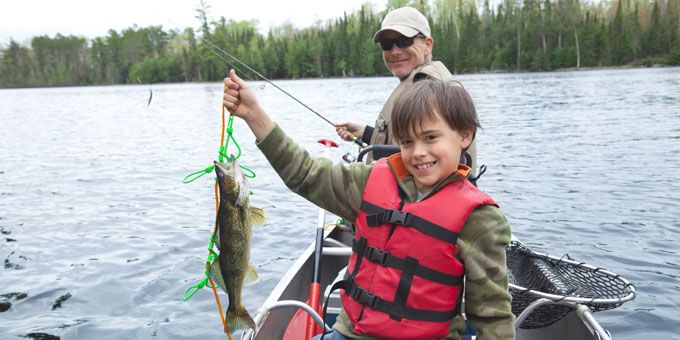Our planet is filled with a multitude of amazing and breathtaking animals. Unfortunately, due to climate change, deforestation, and other man-made problems, there are fewer animals today than there should be. While humanity is making strides to protect these animals, there are many endangered species that are on the brink of disappearing for good. We've listed a few of the more endangered animals and some places you can find them so that everyone can get a glimpse of these magnificent creatures in case they are soon to be gone forever.
It is an unfortunate truth that some of the beautiful creatures on our planet are facing extinction. Luckily, some zoos and other centers make efforts to preserve and breed these animals. Visit one of these places and see some of the endangered animals of the earth.

Red Pandas
Endangered
Red Pandas typically grow to be slightly larger than a typical house cat. They have reddish-brown fur and big, bushy tails that usually measure 18 inches long, which they use as blankets in cold weather. Like Giant Pandas, these pandas enjoy the mountainous forests and sleep most of the day. They feed on bamboo, fruits, acorns, and even eggs.
Where to see them: Many zoos including: Birmingham Zoo, Blank Park Zoo, Bronx Zoo, Central Park Zoo, Cincinnati Zoo, Detroit Zoo, Elmwood Park Zoo, Fort Wayne Children's Zoo, Franklin Park Zoo, Sacramento Zoo, Oklahoma City Zoo

Sumatran Tigers
Critically Endangered
The Sumatran Tigers are a subspecies of tigers that are set apart by their deep orange coats which are covered in dark thick, black streaks. While this iconic species is common to zoos, over the last 25 years, the population of Sumatran tigers in the wild has been cut in half. In fact, there are less than 400 remaining Sumatran Tigers in existence today. Deforestation and poaching have rapidly decreased the population of this spectacular animal.
Where to see them: Atlanta Zoo, Dallas Zoo, Fort Wayne Children's Zoo, Jacksonville Zoo, Los Angeles Zoo, Miami Zoo, National Zoo, Phoenix Zoo, Point Defiance Zoo, Sacramento Zoo, San Francisco Zoo, Oklahoma City Zoo
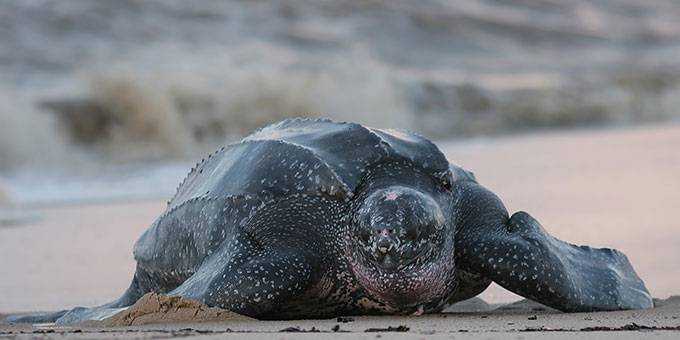
Leatherback Turtles
Critically Endangered
Leatherback Turtles are the largest turtles in the world. They grow up to seven feet long and weigh more than 2,000 pounds. While most turtles have a hard shell, the Leatherback has a leathery-like shell which is more flexible. These massive creatures take the longest migrations between breeding and feeding at 3,700 miles! These turtles are critically endangered due to bycatch and habitat loss.

Hyacinth Macaw
Vulnerable
The Hyacinth Macaw is a species of parrot native to central and eastern South America. They can live up to 50 years and are longer than any other species of parrot with lengths of more than 3 feet. Generally, Hyacinth Macaws have a mild temperament, causing them to be dubbed "Gentle Giants." The Hyacinth Macaw is an endangered species due to caged bird trade and habitat loss.
Where to see them: Akron Zoological Park, Brevard Zoo, Cincinnati Zoo, Caldwell Zoo, Minnesota Zoo, Nashville Zoo, Philadelphia Zoo, St. Louis Zoo

Cross River Gorillas
Critically Endangered
There are only an estimated 200 - 300 Cross River Gorillas left in the wild. These gorillas are found throughout the lowland montane forests and rainforests of Cameroon and Nigeria. The Cross River Gorilla stands about 4.5 - 5 feet tall and can weigh up to 440 pounds. The Cross River Gorilla is at risk mostly due to loss of habitat and illegal hunting.
Where to see them: North Carolina Zoo, San Diego Zoo

Black Rhinoceros
Critically Endangered
The Black Rhino is mostly endangered due to early European hunters who killed for food or amusement. Today there are only an estimated 5,000 Black Rhino left. Although rebuilding the Black Rhino population has made great strides, poaching is still contributing toward the endangerment of this magnificent creature. The Black Rhino is found in southern Africa and typically has a height of around 5.2 feet and weighs 1,700 - 3,100 pounds.
Where to see them: Many zoos including: Atlanta Zoo, Blank Park Zoo, Brookfield Zoo, Caldwell Zoo, Cleveland Metroparks Zoo, Denver Zoo, Lincoln Park Zoo, Miami Zoo, Pittsburgh Zoo, Potter Park Zoo, Racine Zoo, Sedgwick County Zoo

Amur Leopards
Critically Endangered
This incredible animal’s natural habitat is found near the border between northeast China and far eastern Russia. Similar to other leopards, it can run at speeds up to 37 miles per hour. The Amur leopard is a nocturnal creature and it normally lives and hunts alone, although males occasionally choose to stay with the female after mating and assist in rearing the young. It was classified as Critically Endangered in 1996 by IUCN. Today, there are as few as 70 adult Amur Leopards in the wild.
Where to see them: Audubon Zoo, Beardsley Zoo, Denver Zoo, El Paso Zoo, Fort Wayne Children's Zoo, Jacksonville Zoo, Lincoln Park Zoo, Minnesota Zoo, Oregon Zoo, Philadelphia Zoo, Pittsburgh Zoo, Rolling Hills Zoo[1], San Diego Zoo, Sedgwick County Zoo, St. Louis Zoo

Sumatran Orangutans
Critically Endangered
The Sumatran Orangutan lives in the trees of tropical rainforests. There are only approximately 7,300 Sumatran orangutans left in existence. In their natural habitat, orangutans disperse plant seeds over a wide area, so if they disappeared many tree species would suffer or die out. Sumatran Orangutans are endangered mostly due to rapid habitat loss from fires and conversion of forests to oil palm plantations and other types of development.
Where to see them: Atlanta Zoo, Audubon Zoo, Birmingham Zoo, Cincinnati Zoo, Denver Zoo, Fort Wayne Children's Zoo, Miami Zoo, Rolling Hills Zoo, National Zoo, Oregon Zoo, Philadelphia Zoo, Sacramento Zoo, St. Louis Zoo, Oklahoma City Zoo

Sumatran Rhinos
Critically Endangered
Sumatran Rhinos, or Asian Two-horned Rhinos, are smaller than other types of rhinoceros, weighing in at 1,300 - 2,100 pounds. Along with habitat loss, poaching is a very big threat to the Sumatran Rhinos. In Vietnam, rhino horns are believed to cure cancer. The population of the Sumatran Rhinos is very unstable with fewer than 100 remaining. Unfortunately, only two captive females have reproduced in the past 15 years.
Where to see them: This animal is no longer available for viewing in the US. The only hairy rhino on view to the public was moved[2] from the Cincinnati Zoo to the Sumatran Rhino Sanctuary in Indonesia for a breeding program in November 2015.

Blue-crowned Laughingthrush
Critically Endangered
This bird is characterized for its blue head. Its scientific name, Garrulax Courtois, was given to it in honor of a French missionary, Frédéric Courtois. There are only an estimated 250 of these birds in the wild in southeast China. Pet trade has been linked to the rapid elimination of these beautiful birds.
Where to see them: Cincinnati Zoo, Lincoln Park Zoo

Golden Lion Tamarin
Endangered
Although their mane resembles that of a lion, these small monkeys weigh less than two pounds and are typically around ten inches tall. The orange-gold color is believed to come from a combination of the sun and carotenoids in their food. These monkeys are native to rainforests in southeastern Brazil, but unfortunately there are as few as 400 of the Golden Lion Tamarin left today due to habitat loss, overexploitation, and the pet trade. These monkeys were hunted by the local people at one time because it was believed that they carried yellow fever and malaria.
Where to see them: Many zoos including: Akron Zoological Park, Audubon Zoo, Beardsley Zoo, Blank Park Zoo, Caldwell Zoo, Cape May County Park & Zoo, Elmwood Park Zoo, Houston Zoo, National Zoo, Philadelphia Zoo, Potter Park Zoo, St. Louis Zoo, Topeka Zoo, Woodland Park Zoo

Pangolin
Critically Endangered
The name "Pangolin" comes from a Malayan word meaning "to roll up," which is exactly what these animals do in self-defense. The Pangolin are much like anteaters but are covered in overlapping scales and when in danger roll into a ball to protect themselves. They only weigh around 4.5 pounds and are highly endangered due to being sold in illegal food markets and poached for their scales which are thought to have healing properties. If you are interested in helping the pangolins, check out Save Pangolins[3] for ways you can make a difference!
Where to see them: Singapore's Night Safari

Blue-eyed Black Lemur
Critically Endangered
The Blue-Eyed Black Lemur is a particularly special animal, as it is the only other primate besides humans to have blue eyes. The males are always completely black while the females range from reddish-brown to gray, often with black faces. Emerging from Madagascar, this species of lemur could become extinct in as little as eleven years due to deforestation. This beautiful blue-eyed primate has seen a population decline of more than 80% in the past 30 years and they currently have a population of approximately 450 in the wild.
Where to see them: Los Angeles Zoo, Oakland Zoo, Philadelphia Zoo, Racine Zoo, San Francisco Zoo

Mountain Chicken Frog (aka Mountain Ditch Frog or Giant Ditch Frog)
Critically Endangered
The Mountain Chicken Frog is one of the largest frogs in the world, growing up to eight inches long and weighing around two pounds. The name, mountain chicken, came from the taste of its meat. Its natural habitat is in Montserrat and Dominica. The population of the Mountain Chicken Frog has decreased 80% in the past ten years mainly due to habitat loss.
Where to see them: Akron Zoological Park, Detroit Zoo, Omaha's Henry Doorly Zoo, St. Louis Zoo

Malayan Sun Bears
Vulnerable
Malayan Sun Bears are named for the orange crescent found on their chest. These bears are the smallest bears in the world, with the males weighing around 140 pounds and having a height of approximately 4 feet. However, they are still plenty dangerous. Sun Bears are sometimes called Honey Bears because of their love of honey and honeycombs. Like many other bears, hunting and habitat loss has become a serious issue for this species.
Where to see them: Atlanta Zoo, Cleveland Metroparks Zoo, El Paso Zoo, Miami Zoo, Oregon Zoo, San Diego Zoo, St. Louis Zoo

Florida Manatee
Endangered
The Florida Manatee is a relative of the elephant and can be found in warmer, typically shallow, waters. It has gray, wrinkled skin that attracts algae. Manatees are gentle, slow-moving creatures and even body surf while playing. These creatures play a very important role in the development of plant growth in the bays, rivers, and coastal waters which they live. Their endangered status is mostly due to habitat loss and death by boats in shallow waters.
Where to see them: Blue Spring State Park, Cincinnati Zoo, Ellie Schiller Homosassa Springs Wildlife Park, Lee County Manatee Park, Parker Manatee Aquarium, Tampa's Lowry Park Zoo, other coastal parks in Florida[4]

African Wild Dogs (aka Painted Dogs)
Endangered
The African Wild Dogs are given the name Painted Dogs because of their multi-colored coats. Each dog has a unique coat and all have rounded ears and only four toes, which sets them apart from other species of dogs. They typically live to be 11 years old. These dogs are very social and are known to assist each other in hunting and taking care of fellow sick dogs. There are fewer than 5,000 left in the wild, and their decline is mostly due to habitat loss and hunting.
Where to see them: Bronx Zoo, Brookfield Zoo, Cincinnati Zoo, Denver Zoo, Houston Zoo, Rolling Hills Zoo, Lincoln Park Zoo, Los Angeles Zoo, Miami Zoo, Oklahoma City Zoo, Oregon Zoo, St. Louis Zoo

Mandrill Baboon
Vulnerable
Mandrills are the largest of all monkeys and one of the most colorful mammals in the world. They can be identified by their blue and red hued face and brightly colored buttocks. They feast on fruits, roots, insects, reptiles, and amphibians. They spend a lot of time on the ground but they can also climb very well and they typically sleep in trees. Mandrill Baboons are endangered primarily due to habitat destruction and hunting.
Where to see them: Many zoos including: Bronx Zoo, Cleveland Metroparks Zoo, Creation Kingdom Zoo, Dallas Zoo, Denver Zoo, Franklin Park Zoo, Jacksonville Zoo, Oregon Zoo, Pittsburgh Zoo, Potter Park Zoo, Tampa's Lowry Park Zoo

Scimitar Oryx
Extinct in the Wild
The Scimitar Oryx was discovered in 1816 and originally lived in Northern Africa. This animal has a set of magnificent curved horns and a pale hide with red markings on the chest. They have wide-set hooves that allow them to walk along the sand. The Scimitar Oryx has the special ability to raise its body temperature up to 116 degrees Fahrenheit in order to avoid sweating and retain water. Currently extinct in the wild, they can only be seen in zoos and private shelters. However, there are a few reintroduction plans that have been underway since the 1990s in hopes of eventually getting these animals back out into the wild.
Where to see them: Brevard Zoo, Cape May County Park & Zoo, Dallas Zoo, Smithsonian National Zoo, and Rolling Hills Zoo

Giant Panda
Endangered
The Giant Panda, or simply Panda, is considered to be one of the cutest animals and is adored in China and around the world. It is the rarest member of the bear family and typically lives in the bamboo forests of China. The Giant Panda starts out the size of a stick of butter at birth and grows to be nearly 300 pounds. Despite being quite heavy, Pandas are great climbers and use their skill to eat 26 - 84 pounds of bamboo every day. Other than eating bamboo, Giant Pandas spend the rest of their time relaxing and sleeping. While Pandas are very popular, they are still listed as endangered due to habitat loss, hunting, and forest fragmentation which prevents mating.
Where to see them: Atlanta Zoo, San Diego Zoo

Komodo Dragon
Vulnerable
The Komodo Dragon is the largest lizard in the world, weighing in at around 150 pounds and growing sometimes to 10 feet long. The Komodos are immensely strong and are the most dominant creature on the islands where they live, which causes them to feast on anything from deer, pigs, water buffalo, or even humans. The lizard relies on camouflage and often attacks its prey from hiding. Komodos are found on the Indonesian islands.
Where to see them: Many zoos including: Akron Zoological Park, Atlanta Zoo, Birmingham Zoo, Bronx Zoo, Cincinnati Zoo, Fort Wayne Children's Zoo, Houston Zoo, Jacksonville Zoo, Knoxville Zoo, Los Angeles Zoo, Minnesota Zoo, Nashville Zoo, Phoenix Zoo, San Diego Zoo, Woodland Park Zoo, Oklahoma City Zoo.

Cotton-top Tamarin
Critically Endangered
These monkeys weigh in at less than one pound and are known for being the cutest in South America. The name comes from the white fuzzy hair that sits on top of their head. The Cotton-top Tamarins have been studied for their social behaviors, primarily their cooperation and spite. The monkeys in the communities often share in child rearing duties, but they also will deny cooperation to monkeys who deny them benefits. These special monkeys are endangered because of loss of habitat, although there are organizations hoping to stop this through education.
Where to see them: Many zoos including: Brookfield Zoo, Caldwell Zoo, Cape May County Park & Zoo, Central Florida Zoo, Central Park Zoo, Rolling Hills Zoo, El Paso Zoo, Franklin Park Zoo, Oakland Zoo, Oregon Zoo, Potter Park Zoo, St. Louis Zoo, Zoo Boise

Red Wolves
Critically Endangered
Red Wolves are cousins to the more popular slender gray wolves and their name, as you might guess, comes from the red tint of their coats. Red Wolves are thought to be some of the first wolves to be discovered by colonists when they came to the New World. These wolves were almost extinct in the 1980s, but with the help of the U.S. Fish and Wildlife Service, a breeding program has somewhat improved the population. Red Wolves are still endangered, but their numbers in the wild have more than doubled in the last 20 years.
Where to see them: Beardsley Zoo, Brevard Zoo, Jacksonville Zoo, Knoxville Zoo, Lincoln Park Zoo, North Carolina Zoo , Point Defiance Zoo, Tampa's Lowry Park Zoo

Clouded Leopard
Vulnerable
The Clouded Leopard is given its name on account of its spotted coat. This mysterious animal is very rarely seen in the wild and is believed to be a link between big cats and small cats. Despite its name, the Clouded Leopard is not closely related to the leopard we are generally familiar with. These cats are excellent climbers and have rotating back ankles that allow them to climb headfirst, like a squirrel, down a tree. The Clouded Leopard also boasts the largest canine teeth of any wild cat of its size.
Where to see them: Atlanta Zoo, Central Florida Zoo, Cincinnati Zoo, Denver Zoo, Houston Zoo, Miami Zoo, Nashville Zoo, National Zoo, Pittsburgh Zoo, Point Defiance Zoo, Tampa's Lowry Park Zoo, Oklahoma City Zoo.

African Elephants
Vulnerable
African Elephants are the largest land animals on Earth and they can be seen across 37 countries in Africa. The elephants' large ears help to radiate heat and keep them cool. These animals are famous for their large trunks which contain more than 100,000 different muscles and can be used for breathing, drinking, trumpeting, and grabbing items. Elephants have a pregnancy period of 22 months, and at birth, baby elephants weigh in at a whopping 200 pounds or more. Due to their ivory tusks, elephants have been greatly decreasing in numbers over the years, but the hunting has been slowed recently due to public awareness. African Elephants are common in zoos, but calls have been made recently to lessen elephant exportation.
Where to see them: Many zoos including: Cleveland Metroparks Zoo, Dallas Zoo, Houston Zoo, Jacksonville Zoo, Maryland Zoo, North Carolina Zoo, and Oakland Zoo.
How many of these animals have you seen in person? Do you have a favorite endangered animal? Let us know in the comments below, and don't forget to spread the word about these magnificent animals with your friends by using the share button below!
|
1. ^ Rolling Hills Zoo 2. ^ was moved |
3. ^ Save Pangolins 4. ^ other coastal parks in Florida |












